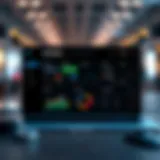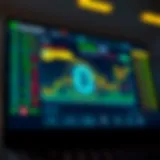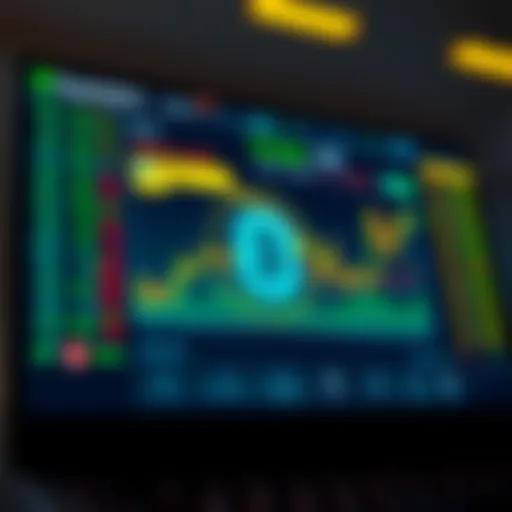A Comprehensive Guide to Creating and Selling NFT Art
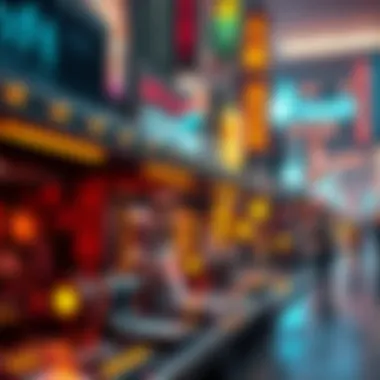

Intro
The world of digital art has been transformed in recent years, primarily through the rise of Non-Fungible Tokens, or NFTs. This shift has opened up vast opportunities for artists to create, sell, and trade art in a manner that was once inconceivable. As the intersections of creativity, technology, and commerce grow ever more intricate, understanding how to navigate this landscape is essential for artists and investors alike.
NFTs not only allow for true ownership of digital creations, but they also introduce new revenue models for artists. By leveraging blockchain technology, artists can receive royalties on secondary sales—effectively ensuring that they benefit from the ongoing appreciation of their work. Navigating this environment, however, necessitates a clear understanding of both the technical and market aspects of NFT art.
This guide aims to illuminate the path for both budding creators and seasoned artists. It will dissect the fundamental concepts of NFTs, explore the multitude of platforms available for selling art, and provide insights into effective marketing strategies. Furthermore, we will delve into current market trends and the innovations within the blockchain space that support this digital revolution.
Now, let’s dive into the first major heading of this guide—Market Insights.
Market Insights
To effectively engage in the NFT ecosystem, one must grasp its market dynamics and current trends. This section will explore the pulse of the cryptocurrency markets, focusing on the trends that shape NFT valuations and sales.
Current Trends in Cryptocurrency Markets
Cryptocurrency markets have witnessed significant volatility, influencing how NFTs are valued and traded. The popularity of platforms like OpenSea, Rarible, and Foundation illustrates the increased interest in NFT art, and as such, the market performs in tandem with these trends. Artists should pay close attention to:
- Price Fluctuations: The prices of cryptocurrencies such as Ethereum, which are often used to purchase NFT art, can impact buying behavior.
- Seasonal Demand: Certain times of the year may see spikes in NFT sales, such as during major art events or collaborations with popular brands.
- New Collector Behavior: There is a growing trend of collecting not just for personal enjoyment but as an investment strategy, influencing how artworks are priced and marketed.
Key Indicators for Market Analysis
Understanding market indicators can help artists and investors make informed decisions. Here are some crucial elements to consider when assessing the NFT landscape:
- Volume of Transactions: Tracking the total number of sales and the amount of currency traded gives a sense of market health.
- Ownership Distribution: Analyzing the distribution of ownership can reveal whether assets are being hoarded or if they have a broader collector base.
- Artist Reputation: Established artists usually see greater demand, but emerging talents can disrupt norms if they bring something unique to the table.
Art is often seen as a reflection of culture and sentiment. Thus, following community discussions on platforms like Reddit can provide real-time insights into what buyers value.
"The beauty of NFTs lies not only in their digital art representation but in the economic systems they create, allowing for fluid interaction between creators and their audiences."
As we transition to the next section, let’s explore the innovations happening within the blockchain space that are shaping the future of NFTs.
Foreword to NFTs
The world of digital art has evolved significantly in recent years, and at the heart of that transformation lies the concept of Non-Fungible Tokens (NFTs). The introduction of NFTs marks a pivotal moment in how creativity and ownership are perceived in the digital realm. Given the rise in popularity of NFT art, understanding this concept is essential, not only for artists but for collectors and investors alike. This section aims to unveil the intricacies surrounding NFTs and why they’ve become crucial in today’s art and technology landscape.
Defining Non-Fungible Tokens
Non-Fungible Tokens, often labeled as NFTs, are unique digital assets that replicate ownership of a specific item, typically housed within a blockchain. Unlike cryptocurrencies such as Bitcoin or Ethereum, which are interchangeable and valued uniformly, NFTs are one-of-a-kind and cannot be exchanged on a like-for-like basis. They serve to cement a form of ownership for digital art, music, and various forms of content.
The primary characteristic that distinguishes NFTs is their uniqueness. Think of it this way: when you buy a copy of a famous painting, it's simply a reproduction and lacks the value of the original. NFT art solves this problem by ensuring that the digital artwork is also one of a kind, verifiable through the blockchain. This secure and transparent system allows artists to sell their work on a platform where authenticity is undisputed.
Understanding the Blockchain
To comprehend NFTs fully, one must grasp the underlying technology: the blockchain. A blockchain is a distributed digital ledger that records transactions across thousands of computers in a way that prevents alterations. This decentralized nature guarantees that the ownership records of NFTs are transparent and immutable. Each NFT transaction—from creation to sale—is timestamped and archived on this ledger.
The blockchain secures not just the ownership but also the provenance of the digital art. Whenever an NFT is bought or sold, the transaction gets logged. This guarantees that artists can track their work and remain connected to their creations long after the initial sale. Consequently, the blockchain fortifies trust between artists and collectors while giving rise to business models such as royalties, where artists earn subsequent payments with each sale of their work.
Historical Context of NFT Art
Before NFTs gained traction, the digital art scene faced numerous barriers regarding ownership and copyright. Artists often struggled to monetize their work online due to the easy replication of digital files. In the early 2010s, concepts like digital scarcity surfaced, but it wasn’t until 2017 that NFTs began garnering real attention.
The launch of platforms like CryptoKitties, where users could buy, sell, and breed virtual cats as NFTs, sparked public interest. However, it was the artwork by Beeple that catapulted NFT art into the mainstream, fetching over $69 million at a Christie's auction in 2021, providing a resounding validation of digital artworks as true collectibles.
As artists began creating specific pieces intended for minting as NFTs, the landscape rapidly changed, challenging traditional art norms and presenting new opportunities for digital creatives. Today, NFT art stands as a monumental aspect of both the digital economy and the art world, reshaping how we define creativity and ownership.
The Creative Process Behind NFT Art
Creating NFTs is far more than just a technical operation; it encapsulates a profound creative journey. This section focuses on the importance of the creative process in producing NFT art, articulating key elements, benefits, and considerations that artists should keep in mind. Whether you’re an emerging artist or an established one trying your hand at NFTs, understanding this creative trajectory is essential to resonate with your audience and carve a niche in the evolving digital landscape.
Conceptualizing Your Artwork
Before putting pen to paper—or more accurately, pixels to screen—conceptualizing your artwork is a pivotal step. This is where your ideas take shape, informed by inspiration and personal style. Artists must ask themselves questions like, "What stories do I want to tell?" and "How do I want to use digital mediums to express these stories?" A strong concept can elevate the artwork from mere visuals to a narrative that engages and moves viewers. Understanding your audience is also crucial; consider what messages or themes might resonate with them.
Choosing the Right Medium
When it comes to NFT art, the choice of medium can greatly influence the final product's appeal. Some artists are drawn to digital painting, while others might prefer 3D sculpting or photography. The medium not only affects the aesthetic but also the feasibility of the artistic expression. For instance, digital paintings can be more easily altered, while 3D models may offer a more immersive, tangible experience. Each option has its own learning curve and set of tools, so it’s wise to explore different mediums before settling on one that complements your artistic vision.
Digital Tools for Creation
In this digital age, your toolset is paramount in shaping the final piece of art. The right tools can help streamline your workflow and enhance your creative output. Here’s a closer look at some essential digital tools used in NFT art creation:
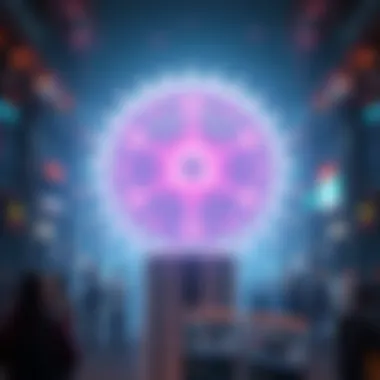

Graphic Design Software
Programs like Adobe Photoshop or Corel Painter allow artists to create stunning digital illustrations. One of the most significant characteristics of graphic design software is its versatility. From layering to advanced brush settings, these applications provide artists the means to bring their visions to life. Importantly, many of these tools come with extensive tutorials and community support, making it easier for newcomers to pick up. However, it can be costly, and it demands a degree of technical proficiency that might not suit everyone’s tastes.
3D Modeling Tools
For those attracted to three-dimensional art, tools like Blender or Autodesk Maya offer robust capabilities to craft intricate models. These tools enable artists to push the boundaries of physical dimensions, allowing creations to be visualized from multiple angles. A key feature of 3D modeling software is its rendering ability, which turns basic structures into vibrant, lifelike artworks. On the flip side, these tools can be overwhelming for novices due to their steep learning curve and complexity.
Animation Software
Programs like Adobe After Effects or Toon Boom Harmony add yet another layer to NFT art through movement. Animation can breathe life into static images, creating engaging narratives that captivate audiences. The main advantage of using animation software is the ability to create dynamic content, drawing viewers in and increasing the chances of engagement. Nonetheless, mastering animation can require significant time and devotion, which might swell the production timeline for an artist.
The creative process is not merely about aesthetics; it’s about crafting an experience that speaks volumes.
Moreover, savvy artists understand the importance of experimenting with their chosen medium and tools. This exploration can lead to a unique artistic voice that not only sets one apart from the crowd but also attracts loyal collectors. In the end, a well-thought-out creative process can significantly enhance the quality of NFT artwork and its success in the market.
Minting Your NFT Art
Minting is a critical step in the process of creating and selling NFT art. Essentially, it’s the moment when your digital creation is transformed into a non-fungible token on the blockchain. Up until this point, your art is just a file on your computer, but minting gives it permanence and a unique identity in the digital realm.
The importance of minting lies not only in this transformation but also in the security and ownership it provides. When you mint your artwork, you're adding it to a blockchain, which is a public ledger that verifies the authenticity of each token. This process not only secures your art from imitation but also ensures that you, as the creator, can maintain ownership rights.
Selecting a Blockchain
Ethereum
Ethereum is often regarded as the original platform for NFTs. Its smart contract capabilities allow artists to create complex and customizable NFTs. The key characteristic of Ethereum is its strong network and widespread adoption, making it a well-known entity in the NFT marketplace. This popularity means that artists using Ethereum can tap into a broad audience, leading to potential sales. However, one downside is the gas fees, which can fluctuate drastically. These fees are paid for the computational power required to execute smart contracts, which can be prohibitively high at times, squeezing the profits of the artists.
Solana
Solana has gained traction as a fast and cost-effective option for minting NFTs. The unique feature of Solana is its high throughput capability, meaning it can process thousands of transactions per second. This attribute makes it attractive for artists seeking a quick and affordable minting option. For those funding their art, lower fees mean a better margin. However, the network is still developing its community and marketplace presence compared to Ethereum.
Polygon
Polygon serves as a layer-2 scaling solution for Ethereum, which allows artists to mint NFTs with reduced fees and enhanced speed. The key characteristic of Polygon is its hybrid model, which blends the benefits of Ethereum security with its own scalability solutions. Artists can enjoy the familiarity and trust of the Ethereum network while gaining economic advantages. However, since it's a bit complex, newcomers might find its setup and usage slightly confusing.
Choosing a Marketplace
OpenSea
OpenSea is the largest NFT marketplace and a significant player in the space. It supports various digital goods beyond just art, which adds a diverse element to its platform. One notable feature is its user-friendly interface that allows both seasoned artists and novices to navigate easily. The drawback, however, is high competition—being a popular platform means artists must find their niche to stand out in a crowded market.
Rarible
Rarible is unique because it operates as a decentralized marketplace where users can create and sell directly without intermediaries. This characteristic can be appealing for artists seeking more control over their sales. Rarible also has a governance token, RARI, that incentivizes community involvement. The main challenge is that the user base isn't as large as OpenSea's, which can lead to fewer eyes on the artwork.
Foundation
Foundation is an invitation-only marketplace that has gained a reputation for focusing on more curated and high-quality NFT art. This exclusivity can lend a certain prestige to artists' works listed on the platform. The downside, though, is that new or lesser-known artists may struggle to gain access. This creates a barrier to entry that could be frustrating for those just starting out.
Creating Your Wallet
Setting Up a Crypto Wallet
Setting up a crypto wallet is essential for anyone looking to mint and manage NFT art. A wallet acts as a digital vault, not only holding cryptocurrencies but also allowing you to manage and transfer your NFTs. A key feature of most wallets is their compatibility with different blockchains, which gives artists flexibility in terms of where they can mint their work. However, it's crucial to choose a reputable wallet provider to avoid scams.
Securing Your Wallet
Security is paramount when dealing with digital assets. Securing your wallet often involves setting strong passwords and enabling two-factor authentication. One major aspect is keeping recovery phrases private and secure. If compromised, someone could gain access to your funds and NFTs, leading to irreversible loss. By ensuring high security, you safeguard not just your investments but your creative works as well.
Listing and Selling NFT Art
The art of creating NFT art isn’t just about the visuals; it’s also about how well you can present and sell your work in this burgeoning digital marketplace. Listing and selling NFT art is an essential step in the overall process. Without a strong strategy in this phase, the most magnificent artwork may struggle to find the right audience. Good listings can draw viewers in, while effective selling tactics can help transform interest into actual sales. The value created during this stage is critical as it combines creativity with commerce.
Let’s break down the critical aspects involved in listing and selling NFT art.
Setting a Price for Your Art
Setting a fair price for your NFT art is an intricate dance of market awareness and self-assessment. Artists often grapple with this part, and getting it right can influence not only your sales volume but also the perception of your work in the marketplace.
Market Research
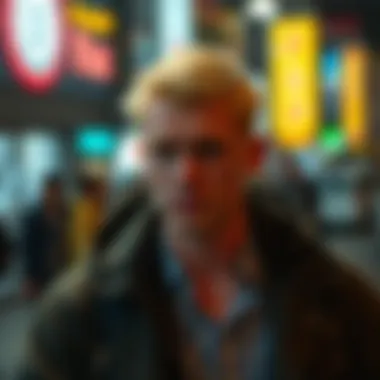

Market research plays a significant role in determining the right pricing for your NFT art. It involves analyzing various factors such as current trends, buyer behavior, and similar artworks. Engaging in thorough market research can provide insights into what prices recent sales of comparable art pieces are fetching. This insight is invaluable.
A key characteristic of market research is its data-driven approach. By tapping into platforms such as OpenSea or Rarible, artists can ascertain which pieces are selling well, and for how much. This is helpful because you want to ensure that your art is not priced too high to alienate buyers, nor too low that it undermines your talent.
One unique feature of market research is the flexibility it offers. Artists can adjust their prices in real-time based on trending data. However, a drawback can arise when artists overly rely on the data rather than trusting their intuition or artistic worth, which sometimes leads to pricing misfires.
Valuation Strategies
Valuation strategies bring another dimension to pricing your NFT art. They are methods employed to assess the true worth of a piece, factoring in its uniqueness, the artist's reputation, production costs, and current marketplace conditions. Artists might take a few approaches, such as cost-plus pricing or comparative market analysis.
The key trait of valuation strategies is that they allow for a systematic assessment of your work. This is beneficial as artists can set a price that reflects not only the artistic value but also the cost borne in creating the work. With the increasing saturation of the NFT art market, a well-thought-out valuation strategy can help differentiate your artwork from others, making it a popular choice for artists navigating these waters.
However, it’s essential to acknowledge that putting a value on art is inherently subjective. One artist’s Picasso could be another’s simple doodle. If artists lean too heavily on strict formulas, they might inadvertently overlook the unique aspects of their creations.
Creating an Engaging Listing
Once you’ve settled on a price, an engaging listing serves as the bait that attracts potential buyers. An art piece can only go as far as the narrative surrounding it. An effective listing will help contextualize your artwork for buyers, telling a compelling story that resonates with them.
Writing Effective Descriptions
Writing effective descriptions goes beyond simply stating what the art represents. This descriptions should provide an insight into the inspiration behind the work, the techniques used, and any personal connections to the piece. A well-crafted description gives depth and context, pulling buyers into the experience.
The hallmark of compelling descriptions lies in their narrative quality. They should evoke emotions and curiosity, encouraging potential buyers to want to learn more about the piece. This is crucial because an emotional connection can often spur buyers to make a purchase. One must be careful, though; while rich details are key, overwhelming buyers with jargon may turn them off.
Utilizing Visual Aids
In addition to strong descriptions, visual aids can bolster your listing significantly. High-quality images or videos showcasing the artwork from different angles, in various settings, and even in action, can galvanize interest. Presenting your NFT art effectively visually is as important as the art itself.
The strength of visual aids is their ability to enhance the emotional impact of the artwork. A well-chosen visual can convey the narrative of your piece even before the buyer reads the description. However, relying solely on visuals without adequate text could lead to misunderstandings about what the piece represents. Buyers need the whole story.
Marketing Your NFT
Marketing your NFT art is where the rubber meets the road. It’s essential to have a system in place to get your work in front of potential customers, and there are many ways to do this.
Social Media Strategies
Utilizing social media strategies effectively can significantly amplify your reach. Social platforms such as Twitter, Instagram, and TikTok can serve as vibrant avenues to showcase your NFT art. Engaging posts, stories, and videos can attract followers and potential buyers if done right. Artists should capitalize on hashtags and targeted ads to extend their reach.
The key characteristic here is engagement. An artist who actively connects with their audience builds a community that is likely to support their efforts. This is beneficial because forming relationships can lead to sharing your work organically. However, social media can be hit or miss. Some strategies may work wonders for one artist while falling flat for another, so constant refinement is crucial.
Community Engagement
Community engagement offers a more organic approach to promoting your art. Connecting with fellow creators, collectors, and NFT enthusiasts can create pathways for collaboration and support. Platforms like Discord and dedicated NFT forums foster this kind of interaction.
The key feature of community engagement is reciprocity. Artists who contribute to discussions, provide feedback, or even assist others often find that their own work gets shared more widely. This can create a nurturing environment, attracting potential buyers simply due to their interconnectedness within the community. On the flip side, too much self-promotion can lead to negative perceptions. It’s essential to strike the right balance to be seen as a collective contributor rather than just a salesperson.
Ultimately, both social media strategies and community engagement flow into the larger goal of making your NFT art stand out and reach the right buyers. Drawing on data, crafting narratives, and nurturing connections all serve as key components in the selling process. Managing these elements effectively can help ensure that your hard work finds the audience it deserves.
Understanding Legal and Ethical Considerations
When diving into the world of NFT art, it’s crucial to navigate the complicated waters of legal and ethical considerations. Artists and creators must be informed about rights, responsibilities, and implications their work has in the digital realm. This aspect plays a significant role not just in upholding creators' interests but also in ensuring the integrity of the entire NFT market. Ignoring these factors can lead to unintended consequences, both personally and professionally.
Copyright and Ownership
The concept of copyright is fundamental in the context of NFT art. Copyright essentially grants the creator exclusive rights over their artwork, allowing them to control its reproduction, distribution, and performance. However, it's essential to clarify that when an NFT is purchased, the buyer does not automatically obtain these rights.
Often, buyers assume they are buying the artwork itself, but they may only receive a token that indicates ownership. Therefore, artists should clearly communicate the scope of ownership via the NFT, specifying whether buyers acquire only token ownership or other rights such as the ability to create derivatives or reproduce the artwork.
Legal battles over copyright can be tricky and protracted, impacting both artists and collectors. A fundamental understanding of copyright laws in your jurisdiction is like knowing the rules of a chess game before you play. Without this knowledge, you could find yourself in an untenable position, facing legal ramifications.
Environmental Impact of NFTs
The environmental impact of NFTs has sparked considerable debate, especially given the energy-intensive nature of some blockchains like Ethereum. Miners on these platforms consume vast amounts of electricity as they verify transactions, raising concerns about their carbon footprint.
As an artist, one should be conscious of these factors. Artists can make choices that align with greener, more sustainable practices. Opting to sell on blockchains that employ proof-of-stake frameworks instead of proof-of-work can significantly diminish environmental harm. Knowing that the choices you make can resonate beyond your art—to the planet—is a powerful motivator to be conscientious.
Here are ways you've impact the environment:
- Choosing eco-friendly platforms for minting NFTs.
- Educating your audience about the environmental concerns of NFTs.
- Considering offsetting your carbon footprint through donations to environmental causes.
"The art industry is shifting its focus towards sustainability, and artists can lead the way by making informed decisions."


Respecting Other Artists’ Work
The world of NFTs thrives on creativity, but it's vital to remain vigilant about the intellectual property of others. Plagiarism is rampant in digital art, making it crucial to respect the work of fellow artists. Misusing their work, even unintentionally, can lead to legal liabilities and damage to one’s reputation.
Artists should always strive to create original art and never repurpose existing works without permission. For those inspired by another creator’s work, seeking permission or crediting the original artist can establish goodwill and potentially fruitful collaborations.
It’s also wise to be part of the community that values ethical considerations. Engaging in dialogues about copyright and intellectual property can strengthen bonds among artists, creating an environment rich in respect and mutual growth.
Further Considerations
Here are some practical steps every NFT artist can take to ensure they are on the right track:
- Educate Yourself: Stay informed about copyright, licensing, and associated laws relevant to your country.
- Consult a Lawyer: When in doubt, seeking professional legal advice can save you headaches in the future.
- Read Community Guidelines: Each marketplace will often have rules around copyright infringement and ownership. Familiarize yourself with these rules to avoid pitfalls.
Navigating the Post-Sale Process
The journey of creating and selling NFT art doesn’t end once the transaction is completed. Instead, this phase pivots to an equally important part: navigating the post-sale process. This section dives into the essentials of what happens after the sale, focusing on crucial elements that can shape your relationship with buyers, tracking sales for future insights, and the intricacies of ownership transfer.
Transferring Ownership
Transferring ownership is a fundamental component of the NFT selling process. This step is what differentiates digital collectibles from other forms of traditional art. The essence of NFTs is the ability to transfer provable ownership recorded on the blockchain. Here’s how you can ensure a seamless transfer:
- Confirm Ownership: Always double-check that the NFT is officially minted and you are the rightful owner of the token before the transfer. This avoids any potential disputes later on.
- Utilize Smart Contracts: When listing your NFT for sale, use smart contracts to facilitate the transfer. These contracts enforce the transfer automatically upon payment confirmation.
- Clear Instructions for Buyers: Provide straightforward guidance on how buyers can claim their NFT. This includes specifying which wallet addresses are acceptable and what they need to do to receive their token.
Tracking Your Sales
After a sale, keeping tabs on your transactions is crucial. Tracking your sales can yield valuable insights about your artwork's performance, buyer trends, and overall market movement. Here’s how to stay on top of your sales:
- Utilize Analytics Tools: Many NFT marketplaces, like OpenSea or Rarible, provide tools that allow you to monitor sales activity. Make it a habit to check these analytics regularly.
- Create a Sales Ledger: Maintain a simple spreadsheet or digital ledger where you log each sale, its price, buyer details, and transaction date.
- Market Trends Analysis: Observe trends in your sales over time—the spikes and drops can inform your future marketing strategies and art creation.
"A good artist is not the one who can sell but the one who can engage, observe, and adapt to the waves of the market."
Building Relationships with Buyers
Cultivating a relationship with your buyers can bolster your presence in the NFT community greatly. It’s not merely about selling art but creating a network of mutual support and understanding. Here are some strategies:
- Engage on Social Media: Once a sale is made, reach out to the buyer through their preferred social media platform. This personal touch goes a long way in establishing rapport.
- Offer Exclusive Content: Consider providing your buyers with additional perks, such as behind-the-scenes looks at upcoming works or early access to future collections. This can nurture loyalty and a sense of exclusivity.
- Create a Feedback Loop: After a purchase, solicit feedback. It helps buyers feel valued and gives you insights into your work’s reception which can inform your future projects.
Future Trends in NFT Art
The landscape of NFT art is evolving rapidly, influenced by advancements in technology, shifts in consumer behavior, and emerging regulatory frameworks. Understanding these trends isn't just a pastime; it’s crucial for artists and investors alike looking to position themselves effectively in the marketplace.
Evolving Technologies
Technology is the backbone of NFTs, and as such, its continuous evolution shapes the future of NFT art. New platforms and tools are being developed that offer better handling of metadata, enhanced user experience, and lower transaction fees. For instance, Layer 2 solutions like Arbitrum or Optimism are gaining traction because they promise more efficient transactions that avoid congested networks like Ethereum. These advancements make it easier for artists to mint and sell their works without excessive costs.
Moreover, artificial intelligence is playing an increasing role in art creation and evaluation. AI can assist artists in generating unique artworks, helping them push boundaries in their creativity. Tools like DALL-E and Midjourney show how machines can contribute to artistic processes, leading to new forms of expression that weren’t considerd before. As such, artists must stay informed about these technologies to harness their possibilities effectively.
The Role of VR and AR
Virtual reality (VR) and augmented reality (AR) are set to redefine the viewer's experience in the NFT art space. Imagine an art gallery where buyers can walk through a 3D space filled with digital art, experiencing it as if they were in a physical gallery. Platforms like Spatial and Cryptovoxel are already making this vision a reality, providing immersive environments that enhance how buyers interact with art.
Additionally, AR can bring digital art to the physical world. Imagine picking up your smartphone and viewing a virtual artwork on your wall as if it were actually there. The integration of AR has compelling implications for marketing. Artists can create teaser experiences, drawing potential buyers into the world of their art before they actually purchase it. By optimizing the use of these immersive technologies, artists can appeal to audiences who crave unique, unforgettable experiences.
The Impact of Regulation
Regulatory changes are on the horizon, affecting how NFTs are created, bought, and sold. As governments across the globe start to pay more attention to the implications of digital assets, artists and investors must keep wary tabs on the legal landscape. Regulatory frameworks propose stringent compliance measures that could reshape the operational dynamics of NFT marketplaces, demand transparency in ownership transfers, and even enforce consumer protection rights.
In the U.S., for example, the SEC has begun scrutinizing how NFTs might fit within existing securities laws. Artists might need to think critically about how their works can be classified. This could change the game for creators; understanding how regulation shapes project structure or ownership rights becomes essential. Investing in legal counsel specializing in digital assets could become as vital as mastering art techniques.
"Adapting to regulatory changes is not just about compliance; it’s about ensuring the longevity of one’s work in a dynamic environment."
End
As we come to the end of this comprehensive guide, it’s crucial to pause and reflect on the importance of the journey through creating and selling NFT art. The digital marketplace for art has taken a new direction, demanding both creativity and strategic thinking from artists. Navigating this landscape is not merely about understanding technology but about blending artistry with commerce effectively.
In reviewing the essential points, creators should recognize that the foundation of NFTs lies in the uniqueness they offer — something that traditional art has done exceptionally well over the centuries. Incorporating the aspects of blockchain technology not only provides security but also opens avenues for innovative business models. Artists have to grasp the nuances of the marketplace and ensure that they are pricing their work appropriately based on thorough market research and self-valuation strategies.
Moreover, the ethical considerations surrounding copyrights and environmental impacts serve as poignant reminders that every action has its implications. Artists must navigate these waters carefully, striking a balance between creative expression and responsibility toward the community and the environment.
Overall, the future looks promising for those willing to dive into the NFT realm. With the evolving technologies and the potential for virtual and augmented reality, one can only imagine how art will transform in our increasingly digital world. A solid grasp of these considerations not only empowers artists but enriches the entire art landscape, fostering innovation and collaboration.
Recap of Key Points
- The importance of understanding NFTs as unique assets on the blockchain.
- Selection of appropriate platforms and tools for creation and minting.
- Strategies for pricing and marketing NFT art effectively.
- Legal and ethical aspects artists should keep in mind.
- The potential for future technologies to reshape the art world.
Final Thoughts on NFT Art
As you move forward in this exciting world of NFT art, keep your mind open to new insights and remain adaptable. Remember, the journey is just as important as the destination. Tap into the creative spirit and let your artistic voice shine in the vibrant digital landscape.
